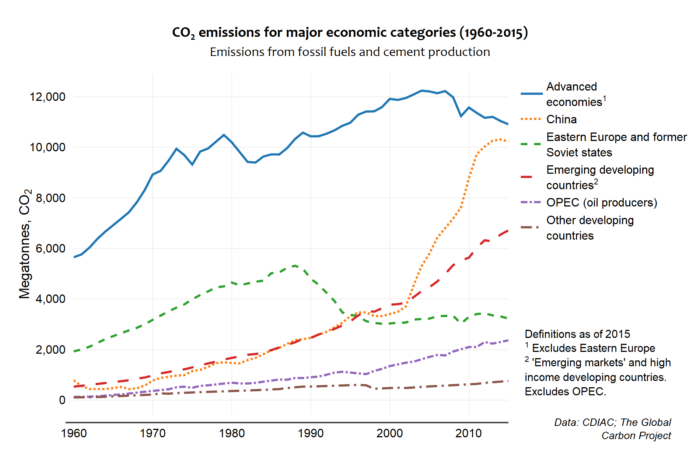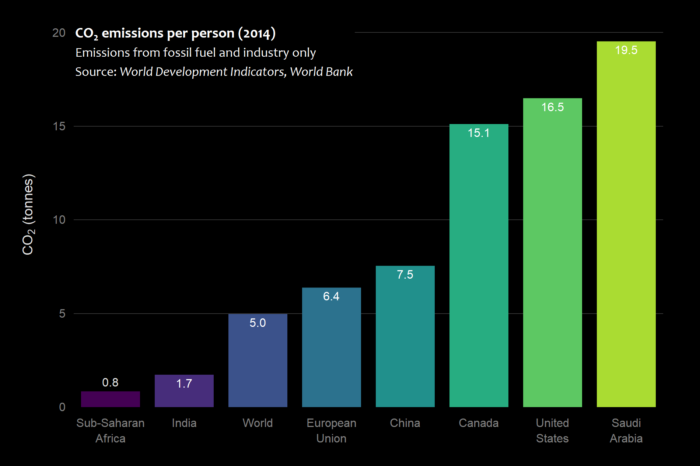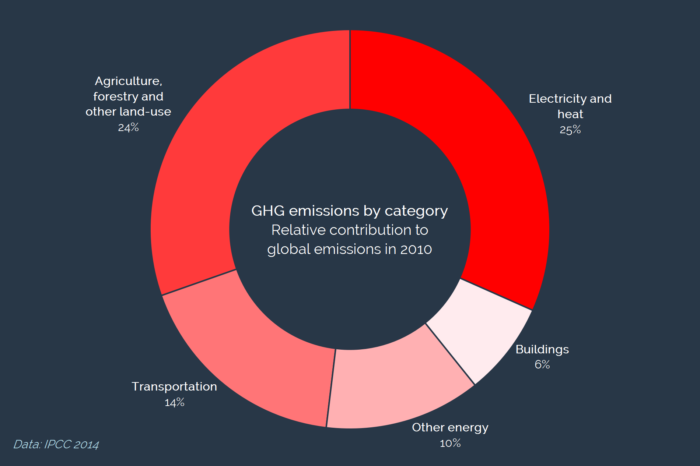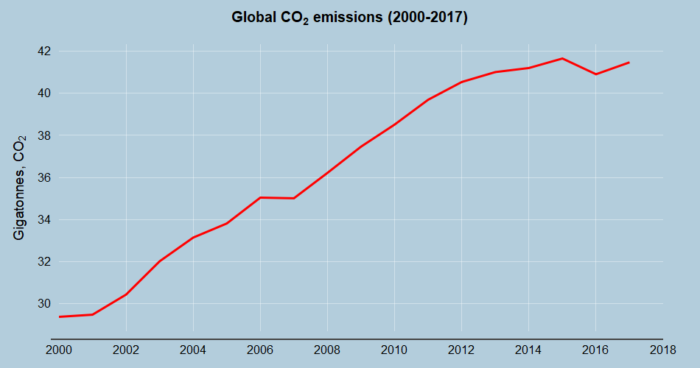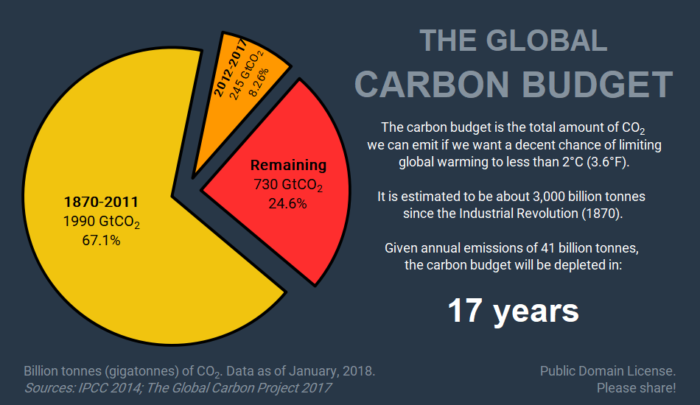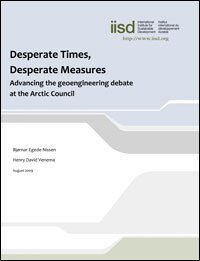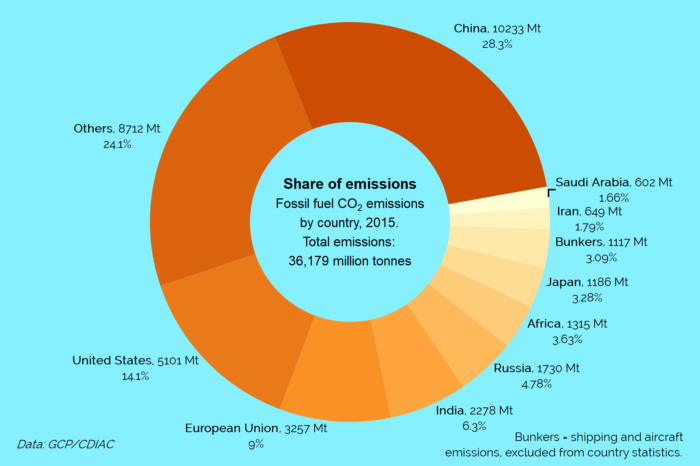
Share of annual carbon emissions
A recent post looked at the growth in emissions among major economic categories since 1960. It’s obvious from this graph that some countries have climbed high on the global emissions ladder. But how high?
The graph shows the annual emissions of the world’s biggest emitters (fossil fuel emissions only). It used to be that the world’s biggest emitters were all developed countries. Today, five of the ten biggest emitters are in the developing world: China, India, Iran, Saudi Arabia and Indonesia. And of these, China is the absolute largest, releasing more than a quarter of all global CO2 emissions every year. Since its population is so large — around 1.3 billion — its relative emissions are not among the greatest, but its absolute contribution makes China an essential part of any solution to global warming. For comparison, India, with an equally large population, is only responsible for about 6 per cent of emissions. Africa, almost as big, is responsible for less than 4 per cent. Japan, with only a tenth of the population of all of Africa, emits roughly the same. And Saudi Arabia, with a population of less than 30 million, still manages to emit about 1.7 per cent of all global emissions, thanks to its extreme oil dependence. One other slice of the doughnut begs for an explanation: the one labelled “Bunkers”. This counts emissions from international shipping and aviation (which uses what’s called “bunker fuels”), since it can be difficult to determine which country should be responsible (the shipper, the receiver, countries transited through, the flag country?).
